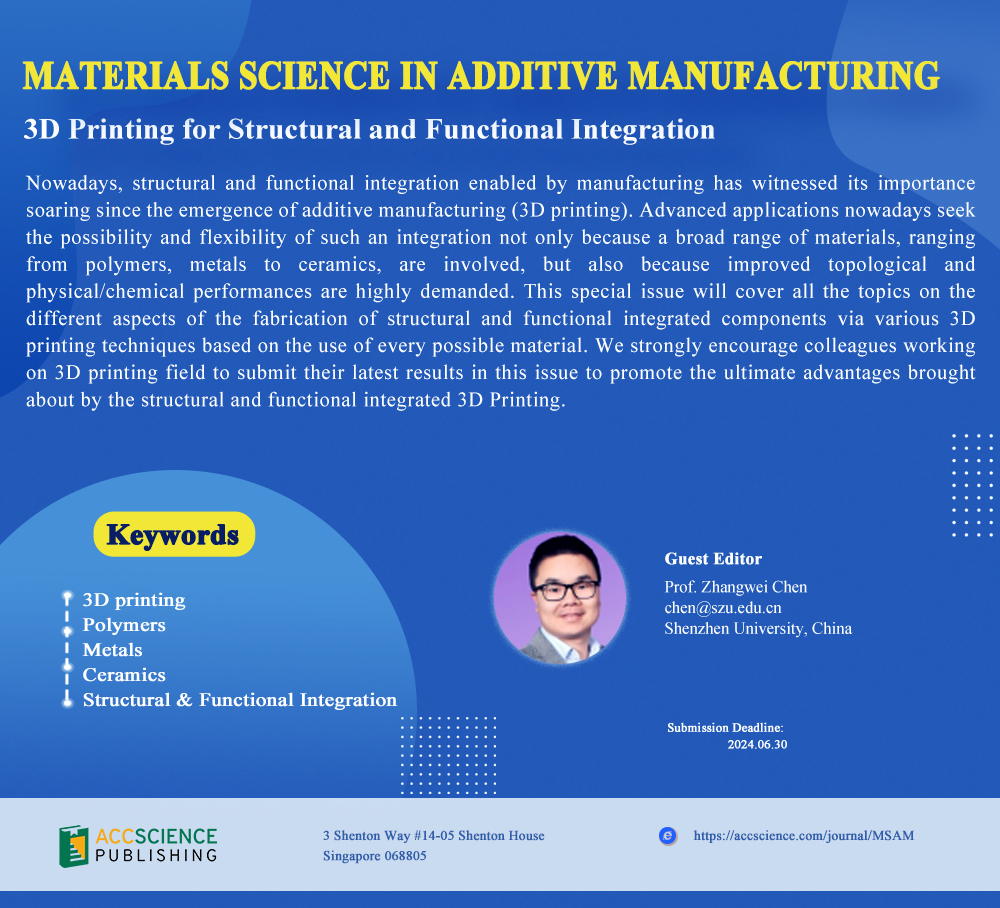
Dear Colleagues:
Nowadays, structural and functional integration enabled by manufacturing has witnessed its importance soaring since the emergence of additive manufacturing (3D printing). Advanced applications nowadays seek the possibility and flexibility of such an integration not only because a broad range of materials, ranging from polymers, metals to ceramics, are involved, but also because improved topological and physical/chemical performances are highly demanded. This special issue will cover all the topics on the different aspects of the fabrication of structural and functional integrated components via various 3D printing techniques based on the use of every possible material. We strongly encourage colleagues working on 3D printing field to submit their latest results in this issue to promote the ultimate advantages brought about by the structural and functional integrated 3D Printing.
Maraging steel powder alteration caused by laser powder bed fusion printing process
Compressive properties and fatigue performance of NiTi lattice structures optimized by TPMS


